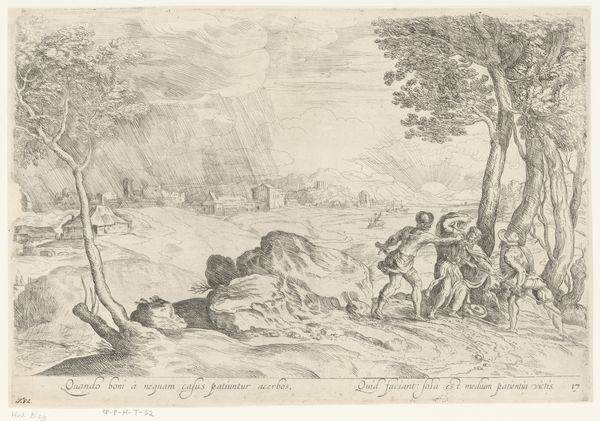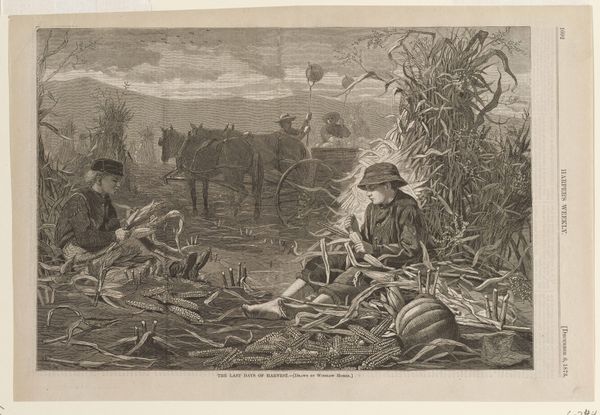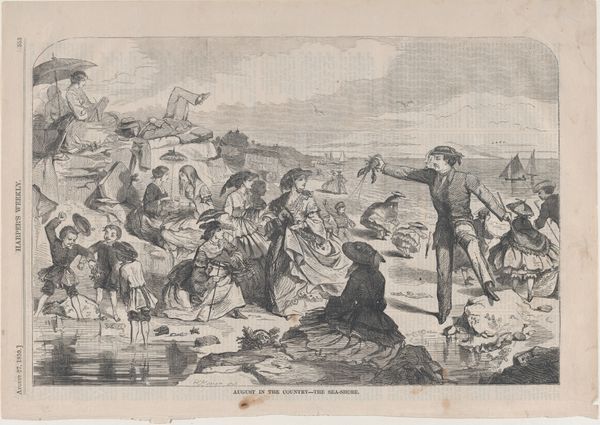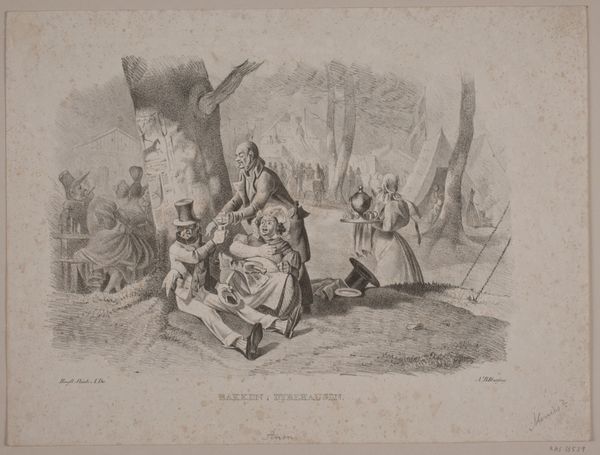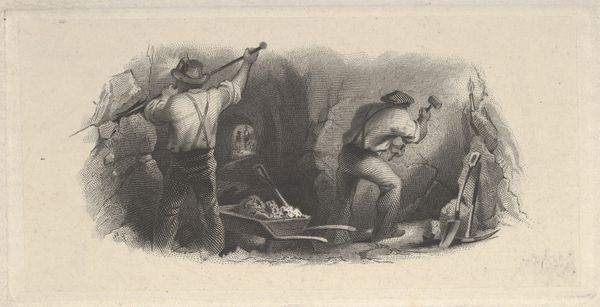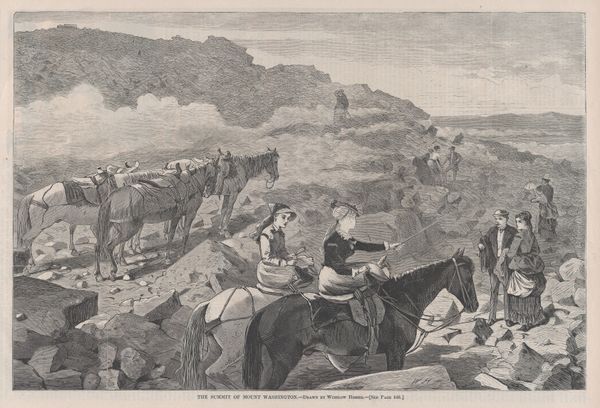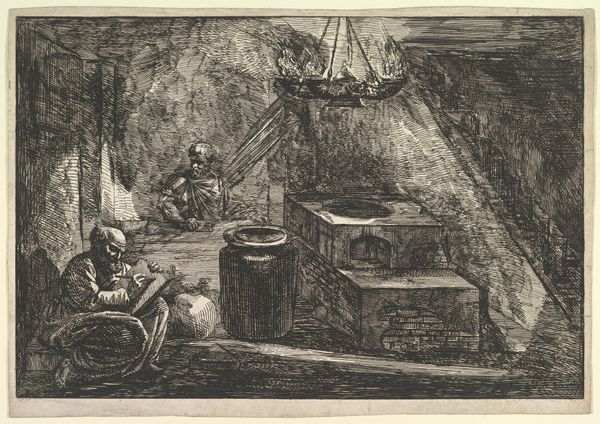
Camping Out in Adirondacks (from "Harper's Weekly," Vol. XVIII) 1874
0:00
0:00
drawing, print, pencil, engraving
#
drawing
#
boat
# print
#
dog
#
landscape
#
pencil
#
men
#
genre-painting
#
engraving
#
watercolor
#
realism
Dimensions: image: 9 1/8 x 13 3/4 in. (23.2 x 34.9 cm) sheet: 10 11/16 x 15 15/16 in. (27.2 x 40.5 cm)
Copyright: Public Domain
Curator: Winslow Homer's print, "Camping Out in Adirondacks," originally published in Harper's Weekly in 1874, depicts a serene scene of leisure. It resides here with us at the Metropolitan Museum of Art. Editor: It strikes me as remarkably still. The monochrome rendering softens the potential ruggedness of the landscape, focusing my attention instead on the subjects and the geometric form of their shelter. Curator: Observe Homer’s strategic use of line and contrast. The intricate details in the clothing and the subtle gradations in the mountains exemplify realism. Note especially the dynamic use of engraving to create visual depth, isn't it marvelous? Editor: And that focus allows us to really interrogate the narrative. Look at the figures: presumably white men in a space marked by a violent history of indigenous removal. That leisurely camping belies the colonial undertones inherent in representations of the American wilderness during this period. The seemingly innocent act of "camping" can then be viewed through the lens of historical dispossession. Curator: I am inclined to disagree. To see it solely in this way, you undermine Homer’s compositional decisions. The overlapping shapes and lines of the canoes and mountain ranges create dynamic symmetry. Notice, also, the meticulous crosshatching to illustrate varying textures - bark, cloth, skin... To frame that as strictly colonialist overlooks the sheer formal skill present. Editor: But form isn't devoid of content. The technical skill that you rightly acknowledge works precisely to normalize such colonialist ideals through aesthetically pleasing imagery. Isn't the seemingly benign portrayal of nature masking its own historical violences? Curator: Perhaps... I'll concede it reveals, as much as conceals. Editor: Indeed. Seeing how technique is never neutral reminds us of how layered meaning can be, so far removed from Homer's time, still relevant in ours. Curator: A potent reminder that visual engagement can foster profound cultural reckonings.
Comments
No comments
Be the first to comment and join the conversation on the ultimate creative platform.



